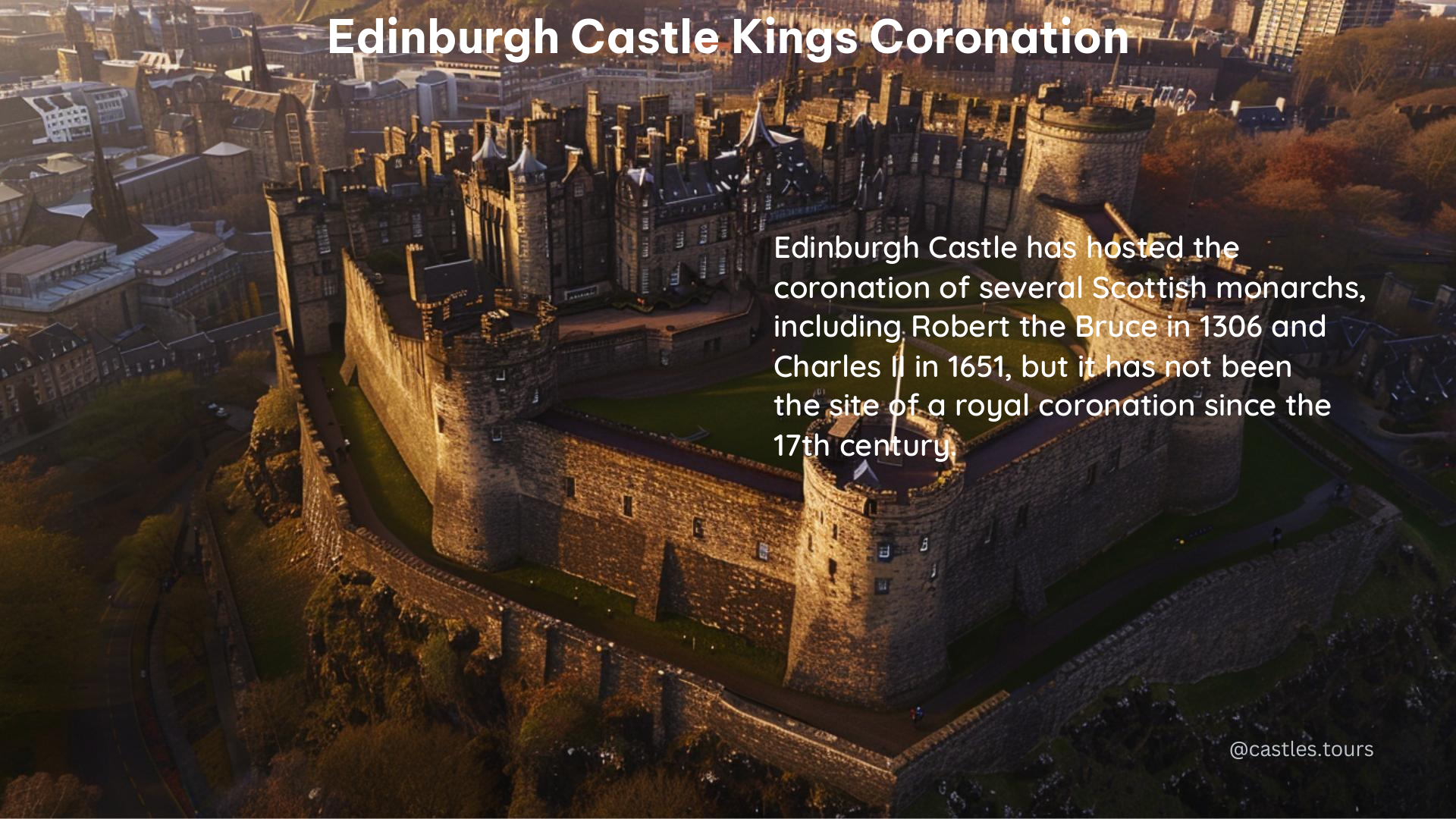The coronation of King Charles III and Queen Camilla on July 5, 2023, in Edinburgh, Scotland, was a historic event that showcased the deep-rooted connection between the Scottish people and the British monarchy. Edinburgh Castle, a iconic landmark and the site of many significant events in Scottish history, played a central role in the proceedings.
The People’s Procession and the Honours of Scotland
The coronation celebrations began with a People’s Procession, where a group of around 100 individuals representing various aspects of Scottish life, including NHS staff, emergency services, and parliamentarians, marched from Edinburgh Castle to St Giles’ Cathedral. The procession was accompanied by The Royal Regiment of Scotland and cadet military, adding to the grandeur of the occasion.
One of the most significant moments of the ceremony was the presentation of the Honours of Scotland, the oldest crown jewels in Britain, to King Charles. These precious artifacts, consisting of the crown, sceptre, and sword of state, were transported from Edinburgh Castle to St Giles’ Cathedral, where they were presented to the King during the service.
The Royal Procession and the National Service of Thanksgiving

Following the People’s Procession, a royal procession featuring King Charles, Queen Camilla, the Prince and Princess of Wales, and other dignitaries made its way from the Palace of Holyroodhouse to St Giles’ Cathedral. The National Service of Thanksgiving and Dedication that took place at the cathedral was a grand affair, featuring performances by renowned artists like Nicola Benedetti and the prominent display of the Stone of Destiny.
Timings and Historical Significance
The events of the day began with the People’s Procession at 1:15 pm, followed by the royal procession and the service. The service concluded with a 21-gun salute from Edinburgh Castle and a flypast by the RAF Red Arrows, adding to the celebratory atmosphere.
The coronation ceremony marked the continued bond between the royal family and the Scottish people, a tradition that dates back to the 17th century. Edinburgh Castle, with its rich history and significance in Scottish affairs, provided the perfect backdrop for this momentous occasion.
The Honours of Scotland and the Royal Palace
The Honours of Scotland, which were presented to King Charles during the service, have a fascinating history of their own. These artifacts, made of gold, silver, and precious gems, have been hidden and rediscovered over the centuries, and they are now on display in the Crown Room at Edinburgh Castle.
The Royal Palace within Edinburgh Castle has also been the site of significant events in Scottish history, including the birth of James VI and the stay of King Charles I before his Scottish coronation in 1633. The castle’s role in the coronation of King Charles III and Queen Camilla continues this legacy of royal connections.
Watching the Event
The coronation ceremony was broadcast live on BBC One, allowing spectators from around the world to witness the historic event. Those who were present along the Royal Mile in Edinburgh could watch the processions and the service, adding to the sense of community and celebration.
In conclusion, the coronation of King Charles III and Queen Camilla in Edinburgh, with Edinburgh Castle playing a central role, was a momentous occasion that celebrated the enduring bond between the Scottish people and the British monarchy. The event showcased the rich history and significance of this iconic Scottish landmark, cementing its place in the annals of royal history.
References:
- https://www.royal.uk/news-and-activity/2023-07-05/scotland-marks-the-coronation-of-king-charles-iii-and-queen-camilla
- https://www.edinburghcastle.scot/see-and-do/highlights/honours-of-scotland
- https://www.edinburghcastle.scot/see-and-do/highlights/the-royal-palace
- https://www.timeout.com/uk/news/king-charless-scottish-coronation-date-and-everything-you-need-to-know-070423
- https://www.bbc.com/news/uk-scotland-65457230
